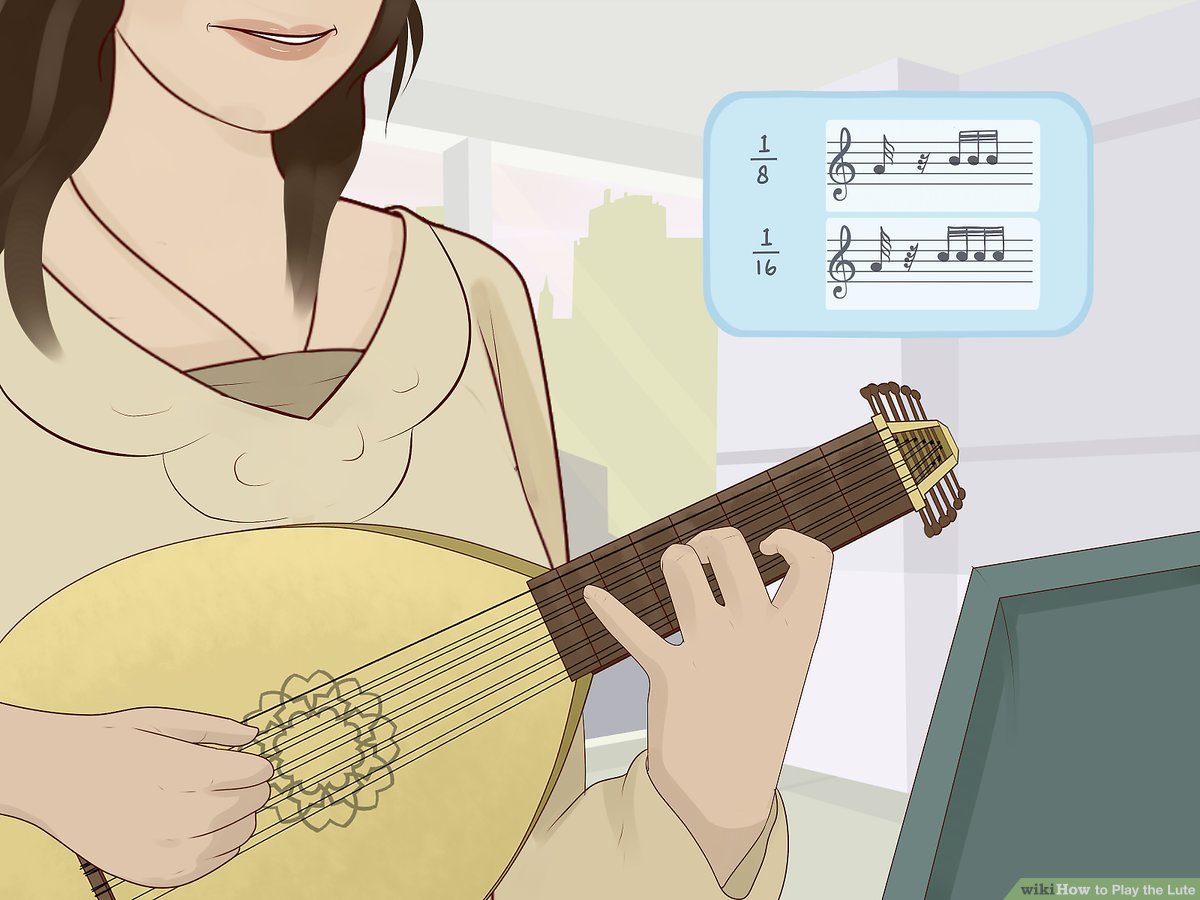A lute is a string instrument that has a long, fretted neck and a belly. It is held like a guitar and played with the right hand. The left hand stops the strings on the frets to create different notes.
Lutes come in different sizes, from small mandolins to large basses. They can be plucked or strummed and have either one or two bridges, which hold the strings in place. The first bridge is placed at the end of the neck near where the player’s right hand plucks or strums the strings, while the second bridge is placed near the bottom of the belly.
- Find a lute that is the right size for you
- You should be able to comfortably reach all of the strings and hold the instrument in your lap
- Place your left hand on the neck of the lute, with your thumb behind the neck and your fingers curled around the front
- Use your right hand to pluck the strings, using either your bare fingers or a plectrum (pick)
- You can pluck the strings in any order you like to create different melodies
- Experiment with different techniques, such as strumming or picking individual notes, to create different sounds on the lute

Credit: www.youtube.com
How Do I Hold the Lute
There are a few things to consider when holding the lute. The first is hand position. The left hand should be positioned behind the neck of the instrument, with the thumb resting on the back of the neck and the fingers curled around the front.
The right hand is placed in front of the sound hole, with the thumb and first finger forming a “C” shape.
The second thing to consider is posture. The lute should be held upright, with the player sitting or standing tall.
It is important to maintain good posture throughout playing, as this will help produce a clear sound. slouching can cause muffled notes and affect intonation (the tuning of notes).
When playing seated, it may be helpful to place a footstool under your left foot to raise up the instrument slightly; this gives you more control over its movement and helps prevent it from slipping out of position.
If you are standing, make sure you have a firm footing and that your weight is evenly distributed – avoid leaning too far forward or backward.
Once you have determined your hand position and posture, you can begin plucking or strumming the strings!
Conclusion
The lute is a beautiful and historic instrument that can be enjoyed by musicians of all skill levels. Though it may seem daunting at first, with a little practice anyone can learn to play the lute. In this blog post we’ll walk you through the basics of how to play a lute, from holding the instrument to making your first chords.
The first step in playing the lute is to properly hold the instrument. The lute should be positioned so that the soundboard is facing towards the player and the neck is tilted slightly upwards. The player’s left hand should be placed on the back of the neck, while the right hand rests on the strings near the soundboard.
Once you’re comfortable holding the lute, it’s time to start making music! First, pluck any string with your right hand to produce a note. You can then use your left hand to press down on different strings at different fret positions to create different notes.
When you press down on multiple strings simultaneously you will create a chord. Experiment with different combinations of notes and chords to create your own unique sound.
With a little practice, anyone can learn how to play the lute and create beautiful music!
- Test Post 2022-12-09 - February 14, 2024
- How to Run in Pokemmo - February 13, 2024
- How Much is My Lol Account - February 13, 2024

